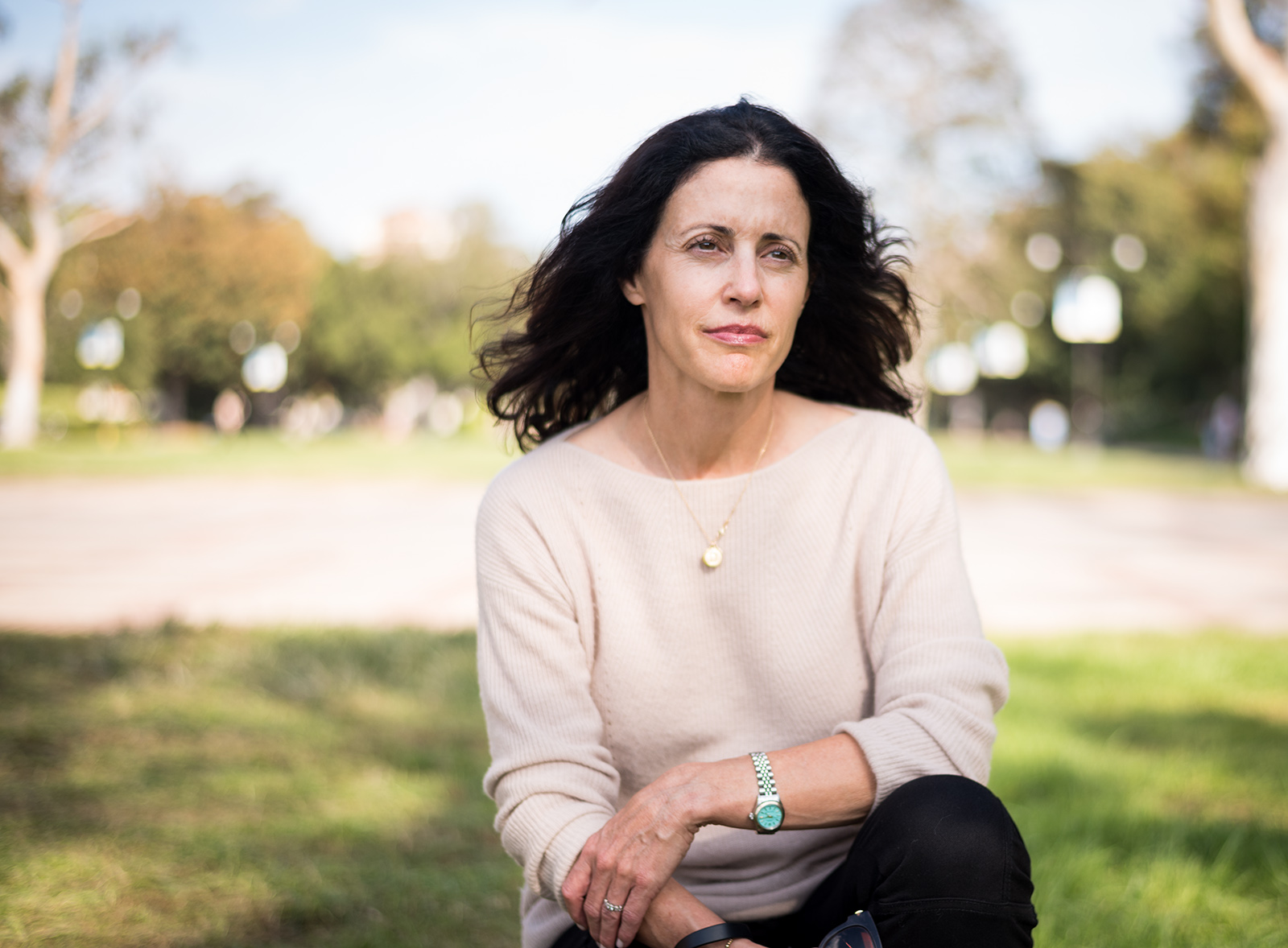Resident apprehensions about community soccer field lead to plan modifications

Nikki Mark, former executive director of the Los Angeles Football Club Academy, proposed a soccer field at Westwood park and named it after her son Tommy Mark. The plan has been revised after community feedback but still faces challenges. (Axel Lopez/Daily Bruin senior staff)

By Maanas Hemanth Oruganti
Sept. 19, 2019 10:33 p.m.
This post was updated Oct. 29 at 5:24 p.m.
Plans for a new soccer field at a Westwood park underwent changes in light of resident concerns.
In May 2019, residents met at the Westwood Recreation Center to express their misgivings about plans for a new fenced and regulation-size soccer field to be constructed in an open field at Westwood Park. Plans for the soccer field had been proposed in 2016. The field will be named after Tommy Mark, a youth soccer player who died in 2018.
Since the May meeting, the City of Los Angeles shifted the location of the proposed field to where four of the park’s eight tennis courts scheduled for upgrades are, said Nikki Mark, Tommy Mark’s mother and former executive director of the Los Angeles Football Club Academy.
The park’s outdoor basketball courts, which are scheduled to be upgraded, would be shifted to a different location within the park; this would allow for more parts of the park to be utilized, some of which currently contain homeless encampments, Mark added.
Mark said she and other proponents of the soccer field did not expect such opposition given the support from the majority of the Westwood community.
“The larger community actually raised the money for this field,” Mark said. “After the meeting in May, the city went back to the drawing board and said, ‘OK, we’re going to redesign another area of this park and put Tommy’s Field where the tennis courts currently are.’”
Michael Skiles, president of the North Westwood Neighborhood Council, said the council listened to public comments about Tommy’s Field revised plan during the Aug. 6 council meeting.
About 10 to 15 people at the council meeting voiced some valid public concerns to counter the 15 to 20 people who showed up to support the field, Skiles said. During the May meeting, some residents expressed concerns about the feasibility of the neighborhood maintaining a grass soccer field, and others believed access to the soccer field would be blocked by a paywall.
However, a majority of the council still voted to draft a letter in support of the field. There were nine yeas, including Michael Skiles, one nay, two abstentions and one recusal, according to the letter.
“The magnitude of the good the field would achieve outweighs the concerns,” Skiles said.
Some people at the meeting were distrustful of how the City of Los Angeles Department of Recreation and Parks would go about building the field, he said.
There were fears the tennis courts and bathrooms would be removed before replacements were planned, and others were concerned relocating the basketball courts would limit the natural light it would receive, Skiles added.
“Most concerns were concerns that this field would not be done right, but the council felt it should be done and done right,” Skiles said.
Skiles said along with endorsing the new plan, he attempted to address some concerns in the letter to the Department of Recreation and Parks. He asked that fences around the field be kept low, that replacements for the tennis courts and bathrooms be planned, and for lights to be installed around a new basketball court, according to the letter. The new basketball courts are part of a plan to reorganize the park and accommodate the soccer field.
Mara Braciszewski, NWWNC member and a graduate student in urban design and urban and regional planning, opposed the endorsement of the soccer field plans because of concerns about the displacement of people experiencing homelessness. Braciszewski said the change in the plan to move some basketball courts to another part of the park would disrupt the lives of these people without the presence of adequate, affordable housing.
“As long as they are out on the street and we don’t have a practical solution to house people who are in distress, then we cannot exacerbate their distress by paving over the only place they have which is free, open, public land,” Braciszewski said. “It’s inhumane to consider paving over their only place that they have during this housing scarcity crisis.”
Mark said many residents who initially opposed the construction of Tommy’s Field gave their support to the project in public meetings following the announcement of changes made to the project plans.
“When the plan came out, some of the opposition said, ‘Thank you so much for listening’ … and then left,” Mark said. “But a small group of neighbors continues to this day to oppose the project.”
Some residents expressed concerns about facing exclusion from the field if they did not participate in official soccer clubs.
Mark said plans for Tommy’s Field included a 4-foot fence to prevent dogs from running into the field and, per a donor request, scheduled hours when any member of the community could access the field without interference from soccer clubs. The field is not planned to be locked up at any time.
“Honestly, some people just didn’t listen to the design,” Mark said. “If a dad wants to go down to the park and play with his kid, they get on the field and play; even the intramural teams at UCLA (can play on the field).”
Braciszewski said she believed these scheduled hours of open access would still not allow for people from all walks of life to be able to utilize the field without the added stress of planning their usage.
“The types of users that I’m talking about are from diverse social, racial, economic backgrounds and don’t have the luxury of time or money to figure out their schedules and play on the field whenever it’s allocated to them,” Braciszewski said. “It’s just scheduling your open space or having the opportunity to have free open space; there’s a big difference there.”
However, Skiles added some concerns could not be satisfied, namely that the added soccer field would increase traffic congestion and heighten demands for more parking.
These concerns were given less weight by the council because alternative forms of transportation are or will be available in the future such as two new LA Metro lines, scooters, bikes and of course walking, he said.
“We believe in the future, we will have too much parking that we will have to repurpose for more productive use,” Skiles said.
Rose Watson, public information officer for the Department of Recreation and Parks said in an email statement that the board of commissioners is addressing follow up questions about the soccer field. It is difficult to determine when the proposal will reach the board for a final vote at this point, she added.
Mark said the field’s design and purpose were centered around the community and had no private agenda.
“This field will support local schools, it will support local leagues and it will support the community for free and unstructured play,” Mark said.


